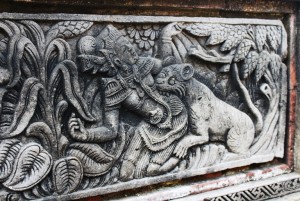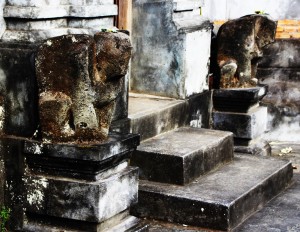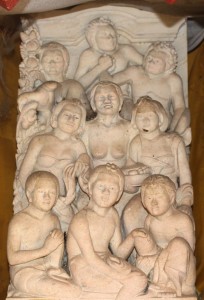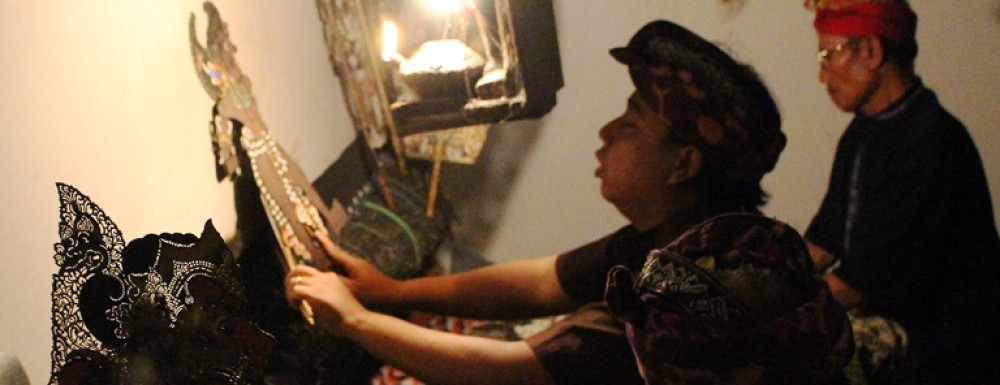Address: Desa Bedulu, Banjar Legas, Jalan Yeh Pulu(?)

Part of a bas relief with scenes from the Tantri cycle at the base of a building in Lempad’s Bedulu house.
Getting there: Walk up Jl Yeh Puluh past Pura Pengastulan temple and the school and turn left. Then look for two unfinished monkey carvings on either side of a house entrance on the left.
Born in 1862, Lempad lived for his first 11 years in this modest dwelling in a village that was part of the Blahbatuh Kingdom.
He then fled to Ubud with his father who had suddenly become the Blahbatuh king’s political enemy.
Family members continue to live in the house and often welcome polite strangers who take an interest in their famous relative.

Unformed stone monkeys flank the entrance to Lempad’s Bedulu house.
Two unformed monkey statues flank the front gate. Lempad often left unfinished sculptures in his buildings and there are various explanations for this. Some say he left the blocks in that state so he could return and work on them when inspiration came. Others say he expected his family members to complete the works. It has also been said he left works in progress as a lesson to other sculptors who needed to know how to form a figure from stone.
Any or all of these explanations may be true.

Lempad’s self-portrait with his ancestors at the family shrine in Bedulu.
Lempad did not create any of the sculptures in this house when he lived here as a boy. He returned to Bedulu in 1952-53 to build the nearby Pura Pengastulan temple and visited his first home as often as he could.
The master work in this house is the small group portrait of Lempad, his family and ancestors in the family shrine. The figure at the bottom right is Lempad’s self-portrait. His mediaeval ancestors are at the back.
Also notable is the bas relief at the base of another building showing scenes from the Tantri Cycle. Note the tiger attacking a man, reminiscent of the hunting scene in the cliff carvings near Yeh Pulu temple.
Cultural tips:
Please note this is a private home and the family has nothing for sale here. When visiting a Balinese home it is always polite to bring a small gift (oleh-oleh).
You can find more directions to Lempad’s work If you pre-order a copy of my new book here https://www.pozible.com/project/lempad-bali-art-book
